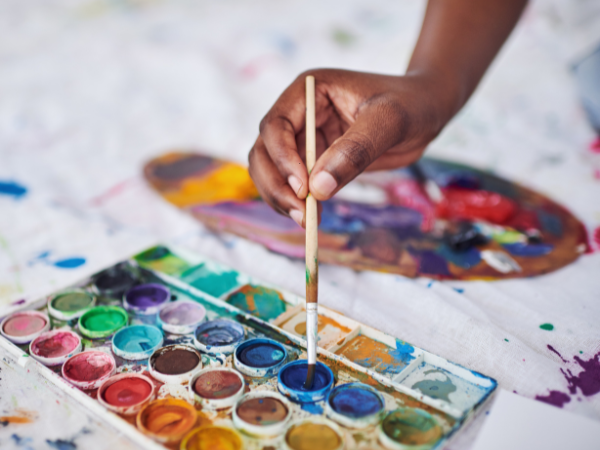Art has always been more than decoration or entertainment; it is a profound form of human expression that connects emotions, thoughts, and experiences. In recent decades, researchers and clinicians have increasingly recognized the therapeutic power of art in supporting mental health and healing.
1. The Historical Roots of Art in Healing
Art has been used for healing since prehistoric times, when cave paintings and ritualistic imagery served as symbolic acts of survival and community bonding.
- Prehistoric Cave Art – Early humans used imagery to express fears and hopes.
- Ancient Civilizations – Egyptians and Greeks linked art to spirituality and medicine.
- Medieval Practices – Religious art provided comfort and meaning during crises.
- 20th Century Emergence – Margaret Naumburg and Adrian Hill pioneered modern art therapy.
- Global Traditions – Indigenous cultures used art in rituals for emotional balance.
From ancient rituals to modern therapy, art has consistently been a bridge between inner experience and external expression, laying the foundation for today’s clinical practices.
2. Understanding Art Therapy
Art therapy is a structured therapeutic practice that uses creative processes to improve mental health. It is facilitated by trained professionals who guide individuals in expressing themselves through art.
- Definition – A blend of psychology and creative expression.
- Techniques – Drawing, painting, sculpting, collage, and digital art.
- Goals – Enhance self‑awareness, reduce stress, and resolve emotional conflicts.
- Accessibility – Useful for children, adults, and elderly populations.
- Clinical Use – Applied in hospitals, schools, and community centers.
Art therapy provides a safe, non‑verbal way to explore emotions that may be difficult to articulate. It empowers individuals to externalize feelings and gain new perspectives.
3. Neuroscience of Art and the Brain
Scientific studies reveal that engaging with art stimulates multiple brain regions, influencing mood and cognition.
- Activation of Reward Pathways – Art triggers dopamine release, enhancing pleasure.
- Stress Reduction – Lowers cortisol levels, reducing anxiety.
- Memory and Emotion – Strengthens connections between hippocampus and amygdala.
- Neuroplasticity – Encourages new neural pathways through creative problem‑solving.
- Mindfulness Effect – Promotes focus and present‑moment awareness.
By engaging both hemispheres of the brain, art fosters integration of logic and emotion, making it a unique tool for psychological healing.
4. Emotional Benefits of Artistic Expression
Art provides a safe outlet for emotions, helping individuals process trauma, grief, and stress.
- Catharsis – Releases pent‑up emotions through creative activity.
- Self‑Expression – Allows articulation of feelings without words.
- Resilience Building – Strengthens coping mechanisms.
- Mood Enhancement – Elevates positive emotions and reduces depression.
- Identity Formation – Helps individuals explore personal narratives.
Art becomes a mirror of the inner world, offering clarity and relief. Emotional healing through art is not about producing masterpieces but about the process of creation itself.
5. Art Therapy in Clinical Settings
Hospitals, rehabilitation centers, and mental health clinics increasingly integrate art therapy into treatment plans.
- Trauma Recovery – Helps survivors of abuse and war express experiences.
- Depression and Anxiety – Provides coping strategies and emotional regulation.
- PTSD Treatment – Used with veterans and first responders.
- Addiction Recovery – Supports self‑reflection and relapse prevention.
- Chronic Illness – Reduces stress in patients with cancer or neurological disorders.
Clinical art therapy demonstrates measurable improvements in patient well‑being, complementing traditional psychotherapy and medication.
6. Community and Social Healing Through Art
Beyond individual therapy, art fosters community connection and collective healing.
- Group Workshops – Encourage social interaction and support.
- Public Art Projects – Murals and installations promote shared identity.
- Cultural Programs – Preserve traditions while enhancing mental health.
- Community Resilience – Art initiatives help communities recover from crises.
- Inclusivity – Provides safe spaces for marginalized groups.
Community art projects demonstrate that healing is not only personal but also collective, strengthening bonds and reducing isolation.
7. Challenges and Limitations of Art Therapy
While art therapy is powerful, it faces challenges in practice and research.
- Accessibility – Limited availability in rural areas.
- Training Standards – Requires certified professionals.
- Evidence Gaps – More scientific studies needed.
- Cultural Differences – Approaches must respect diverse traditions.
- Resource Constraints – Funding and institutional support remain limited.
Acknowledging these limitations ensures that art therapy continues to evolve responsibly, with stronger evidence and wider accessibility.
8. The Future of Art in Mental Health
Art therapy is expanding into new domains, supported by digital innovation and growing recognition of its benefits.
- Digital Art Therapy – Virtual platforms and apps for creative healing.
- Integration with Neuroscience – Research on brain mechanisms of art.
- Global Expansion – Adoption in schools and workplaces worldwide.
- Policy Support – Governments recognizing art in public health strategies.
- Holistic Care – Combining art with mindfulness, music, and movement therapies.
The future of art in mental health lies in accessibility, innovation, and integration with science. As evidence grows, art will continue to be a cornerstone of healing.
Closing Thoughts
Art is not a luxury but a necessity for mental health. From prehistoric cave paintings to modern therapy rooms, art has always been a way to express, connect, and heal. Today, with scientific validation and clinical application, art therapy stands as a vital tool in addressing mental health challenges. By embracing creativity, individuals and communities can find resilience, meaning, and hope.




